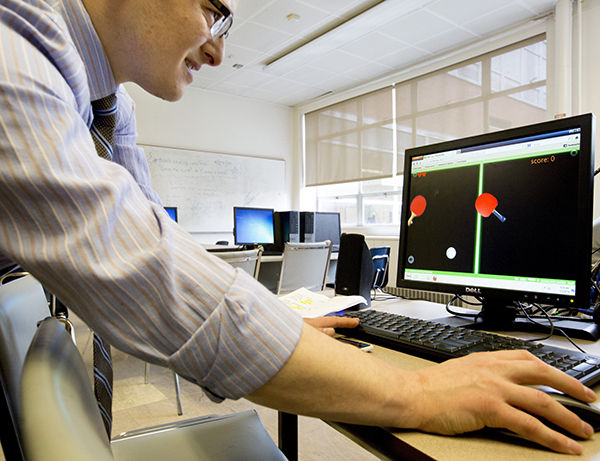Coding classes needed, old-dog students learning new tricks

Today, as the digital age continues to grow, the demand for programmers increases while our supply remains low.
Like learning a second language such as French or Spanish, learning to speak computer has become an essential necessity in our lives and futures. Coding, the ability to read and write a machine language and think computationally, is becoming an essential necessity in our society. So much of what we do is relied on code, from our iPhones to our Netflix accounts to our GPS navigation.
Today, as the digital age continues to grow, the demand for programmers increases while our supply remains low. In fact, less than 2.4 percent of college students graduate with a degree in computer science, according to Computer Science Education Week. This is because many have not been exposed to the idea of coding, or maybe the idea does not seem appealing
Despite this high demand for programming knowledge, 36 of 50 states don’t count computer science classes towards high school graduation; nine out of 10 high schools don’t offer computer programming classes, according to Computer Science Education Week. With demands for more coding knowledge, our education system needs to be modified to accommodate the new technologies we live with. Alongside our foreign languages, math, English, science and history, computer science needs to be included in our primary education.
In hopes for this to change, Code.org’s Hour of Code targeted students in elementary schools to do an hour of coding – over 30 school divisions and 15 million students joined the action, according to Computer Science Education Week. By exposing students at a young age to coding, we can create a new generation of programmers, a generation that will help excel our society and help it benefit from emerging technology.
Now, we aren’t in fourth grade anymore; however, we are still learning and should be offered an opportunity to learn code, despite being underexposed in our upbringing. Rather than St. Edward’s general education requirements, which include American History, Ethics, two science classes, three English classes, etc., an essential class is needed to help our students leave university with more practical foundations. A basic coding class is needed in our curriculum, giving the basic foundations of programming, specifically to non-majors.
Though St. Edward’s has a computer science major and minor, our school needs a way for students to learn the basics of programming sans prerequisites. COSC 2328, or Web Programming, is a computer science class St. Edward’s provides, but has multiple prerequisites that can’t be covered if there is limited space in one’s schedule. A class like Intro to HTML/CSS, where one can learn the basics of one language, could spark students to learn more about programming without the burden of hours on hours of prerequisites.
There are so many different ways someone can learn coding now. Websites like Codecademy, Lynda and Treehouse all give introductory lessons on basic languages of code. If St. Edward’s offered a class with this same formatting style, those who are non-majors could learn how to speak computer.






